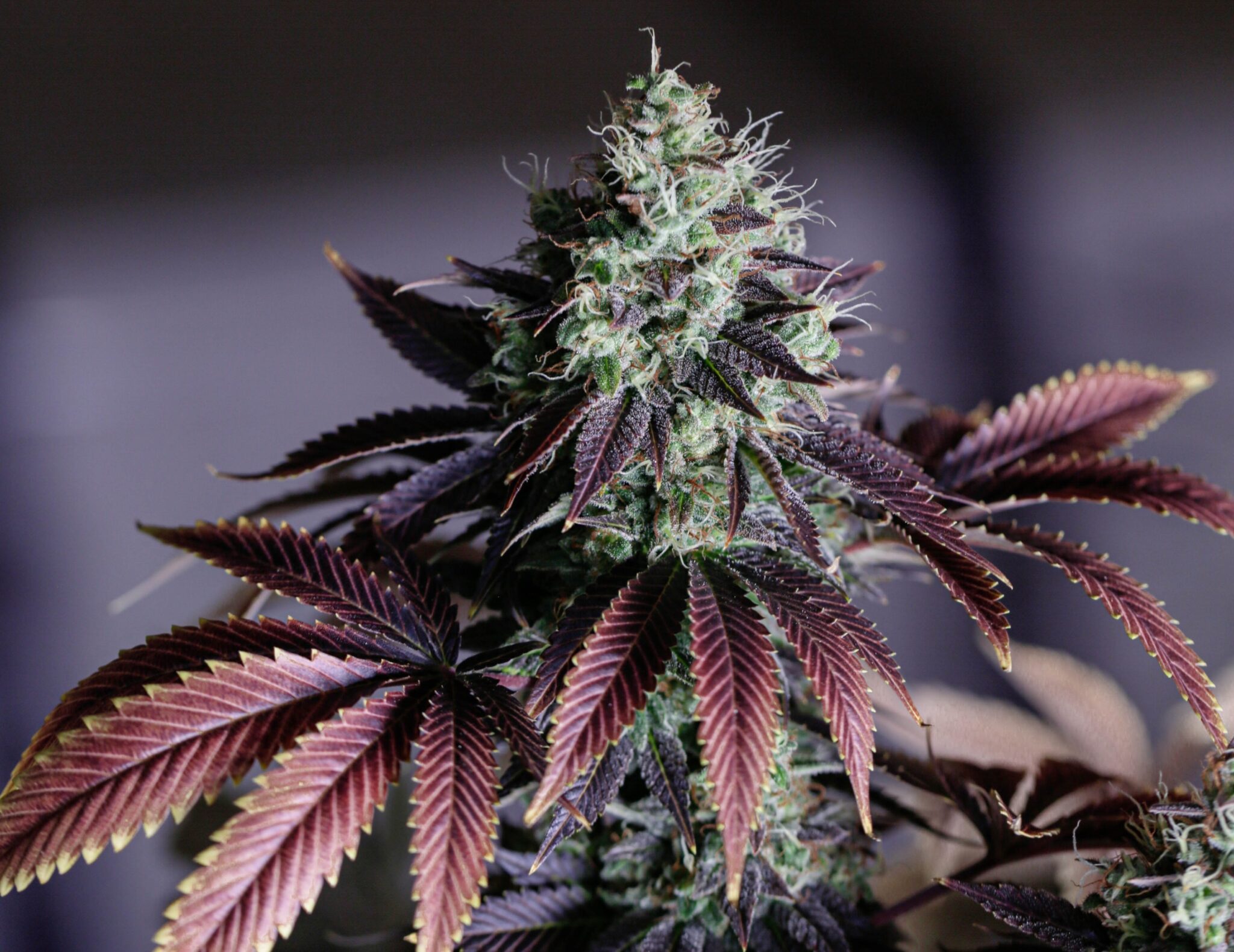You could probably pick your favorite strain out of a lineup. You know the color, aroma, and flavor profile like you know the back of your hand. Blue Dream is one of those strains for many people. It’s iconic, highly recognizable, and well-loved for its elevating effects.
These pretty flowers, covered in the white frost of their trichomes and dainty peach hairs, are beloved by people who want a body high without couch lock and a head high without anxiety. It’s beautifully balanced and positively delicious. Blue Dream likely fits the bill if you want a well-rounded strain to keep on standby.
Where did Blue Dream come from?
Almost every strain has had two parents who worked together to create the beautiful child you enjoy. Those strains also have their own parents. It’s a vast and complex family tree of weed that breeders and growers have worked to perfect for many years.
Blue Dream’s parents are Blueberry, an indica, and Haze, sativa. Blueberry is a combination of Purple Thai and Thai. Haze is Mexican Sativa and a Columbian landrace strain. All of these strains passed down their genetics, eventually being combined into Blue Dream.
Blue Dream is a sativa-leaning hybrid, but it’s well-balanced. Blueberry leans moderately indica, and Haze leans strongly sativa. That’s why breeding the two pulls more in a sativa direction. This doesn’t mean its indica effects go unnoticed. Everything is present in a unique balance that Blue Dream loyalists love.
What does Blue Dream taste and smell like?
Your nose knows what kinds of strains it likes. Weed gets its flavor and aroma from terpenes, aromatic compounds that naturally occur within a plant. These compounds lead us to recognize flowers, fruits, and vegetables by scent alone. You can tell when someone just squeezed lemon in the kitchen, and you know the lavender smell of a spa.
Blue Dream’s terpene profile is myrcene, pinene, limonene, beta-caryophyllene, and just a touch of linalool. Myrcene is spicy, funky, and fruity. It’s found in abundance in mangoes. Pinene is the terpene that gives pine trees their woody, crisp smell. Limonene is the terpene dominant in citrus fruit. Beta-caryophyllene is the spicy warm note in cinnamon and basil, and linalool is synonymous with lavender.
These terpenes combine to create a profile that mimics warm and juicy berries with a touch of woodiness and a slight floral kick.
What are the effects of Blue Dream?
The terpenes and cannabinoids of a strain work together to produce its effects. Terpenes are similar to aromatherapy. You know that smelling the linalool in lavender relaxes and soothes you. Smelling it or inhaling it from your weed produces the same effect. The smell of freshly zested lemons is bright and energizing due to the limonene, and it extends the same impact to your weed.
Blue Dream is much higher in THC than it is in CBD. This means it will stimulate you more than relax you based on its cannabinoids. With a terpene balance that favors relaxation, the edge is taken off that stimulation. This is what makes Blue Dream a mellow experience. You’re uplifted by the THC and limonene, but the soothing terpenes round out the effects.
Blue Dream as a daytime strain
Many people prefer to use Blue Dream as a daytime strain because it’s slightly too energizing for nighttime use and not so sedating that it keeps you stuck to one chair. If you need to stay mellow and productive, Blue Dream is an even-keeled ride that will give you the boost you’re looking for without the sleepy side effects.
Some people find that Blue Dream makes them feel too happy and spacy to be highly productive. This can be mitigated by using a minimal amount of Blue Dream or reserving it for productive tasks that are also creative. You’ll find a little bit of inspiration in the well when you’re pondering.
If you’re prone to existential rabbit holes and smoking leads you to question the subtle nuances of humanity, and why nobody has invented cat shoes, you should probably be careful with all sativa strains. They tend to affect people who lean cerebral while they’re high.
